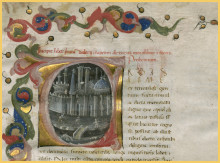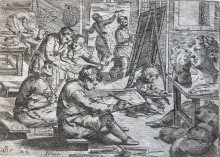Pablo Alvarez
Posts tagged with illustrations in Blog Beyond the Reading Room
Showing 1 - 2 of 2 items

You are all cordially invited to the upcoming exhibit of a selection of manuscripts and early printed books from the 15th to the 17th centuries that were illustrated with illuminations and woodcuts. The display will open in the Hatcher Gallery Exhibit Room (Hatcher Library North) on September 6, 2023.

This blog post features an extraordinary well-preserved copy of what is perhaps one of the earliest extant drawing manuals that were published in Western Europe in the first half of the seventeenth century. Its author is Odoardo Fialetti, an Italian artist whose professional life flourished in Venice at the end of the sixteenth century; Fialetti had access to Tintoretto’s workshop, eventually becoming an accomplished copperplate engraver. While more than 200 engravings are attributed to him, Fialetti is best known for the illustrations he created for his two drawing manuals published in Venice in 1608 and 1609. Indeed, these two manuals became extremely popular among young artists, having a considerable impact on subsequent European manuals of this type published throughout the seventeenth and eighteenth centuries. In a few words, a drawing manual consisted of a collection of images of the human body that served as models for young apprentices; these illustrations represented the body in full or in sections, and were arranged in increasing difficulty. Essentially, these manuals were self-taught guides and, since they were meant to be heavily used as opposed to be shelved merely for reference, currently they are rarely found at libraries, museums, or private collections.